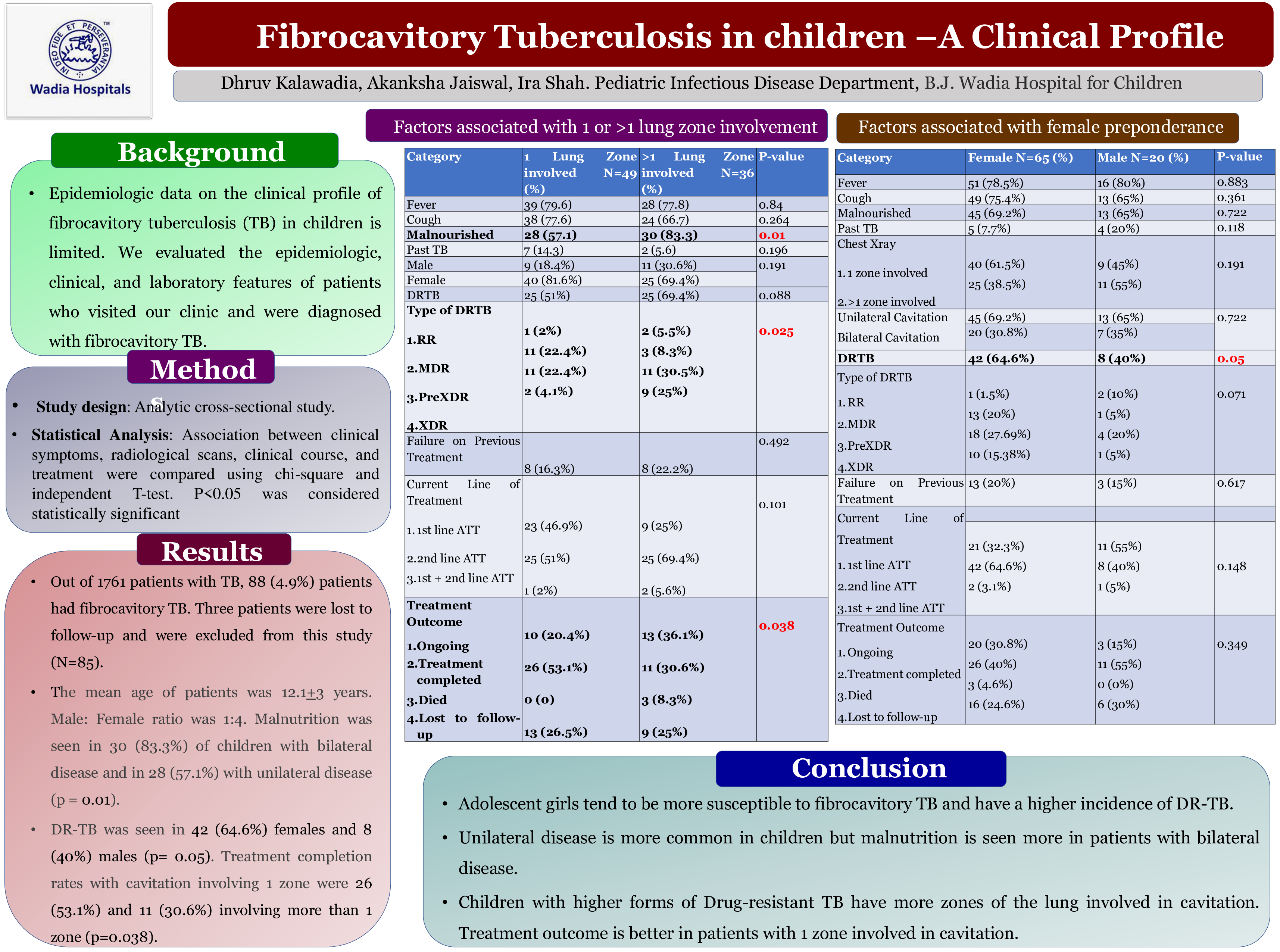Abstract
Background:
Epidemiologic data on the clinical profile of fibrocavitory tuberculosis (TB) in children is limited. We evaluated the epidemiologic, clinical, and laboratory features of patients who visited our clinic and were diagnosed with fibrocavitory TB.
Objective:
- To identify the clinical symptoms and zones of the lungs affected with fibrocavitory TB.
- To identify the drug resistance status, clinical course, and treatment outcome of children affected with fibrocavitory TB.
- To study the association between clinical symptoms, radiological scans, clinical course, and treatment outcome of children affected with fibrocavitory TB.
Methods:
Study design: Analytic cross-sectional study is performed.
Statistical Analysis: Association between clinical symptoms, radiological scans, clinical course, and treatment were compared using chi-square and independent T-test. P<0.05 was considered statistically significant.
Results:
Out of 1761 patients with TB, 88 (4.9%) patients had fibrocavitory TB. Three patients were lost to follow-up and were excluded from this study (N=85). The mean age of patients was 12.1+3 years. Male: Female ratio was 1:4. Malnutrition was seen in 30 (83.3%) of children with bilateral disease and in 28 (57.1%) with unilateral disease (p = 0.01). DR-TB was seen in 42 (64.6%) females and 8 (40%) males (p= 0.05). Treatment completion rates with cavitation involving 1 zone were 26 (53.1%) and 11 (30.6%) involving more than 1 zone (p=0.038).
Conclusion:
Adolescent girls tend to be more susceptible to fibrocavitory TB and have a higher incidence of DR-TB. Unilateral disease in more common in children but malnutrition is seen more in patients with bilateral disease. Treatment outcome is better in patients with 1 zone involved in cavitation.





